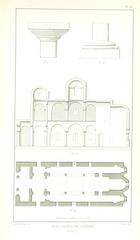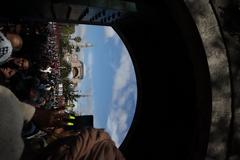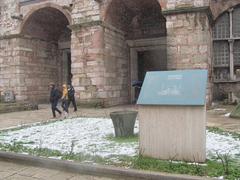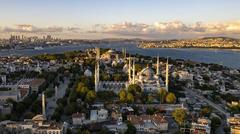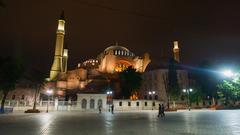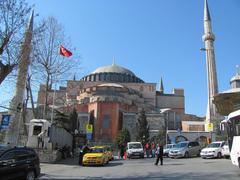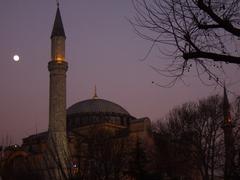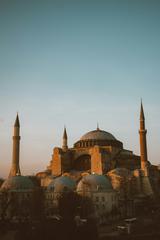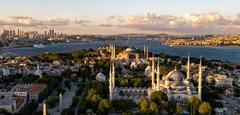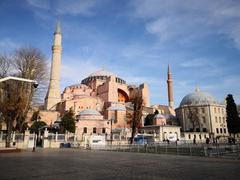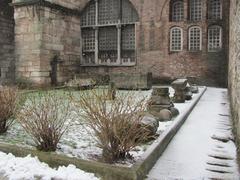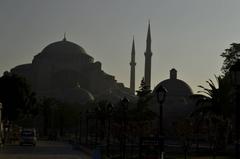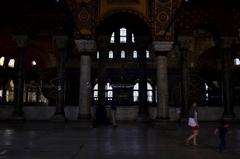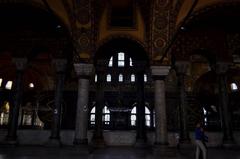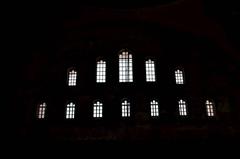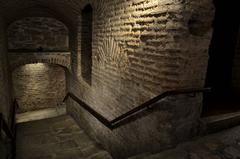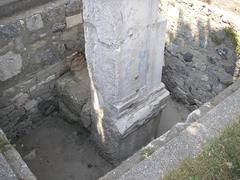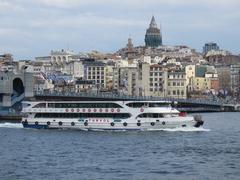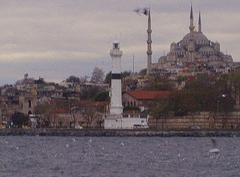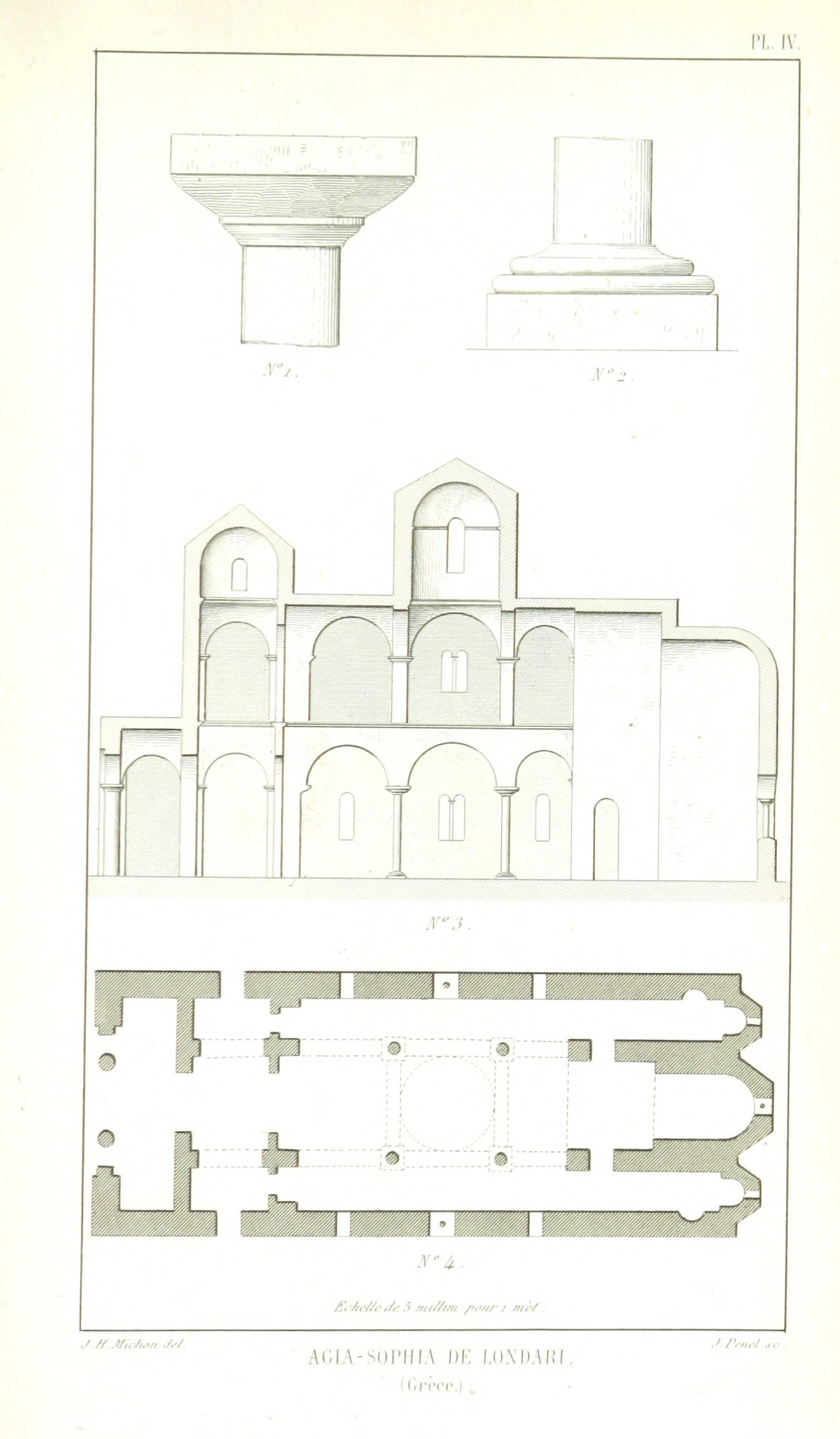
Visiting Ayasofya-i Kebir Cami-i Şerifi: Hours, Tickets, and More
Date: 16/07/2024
Introduction
Ayasofya-i Kebir Câmi-i Şerifi, also known as Hagia Sophia, is one of Istanbul’s most iconic and historically significant landmarks. This architectural marvel has stood the test of time, witnessing the rise and fall of empires and serving multiple religious purposes over centuries. Originally constructed in 537 AD under the Byzantine Emperor Justinian I, Hagia Sophia was the world’s largest cathedral for nearly a thousand years (Smithsonian Magazine). Designed by the architects Anthemius of Tralles and Isidore of Miletus, the structure’s revolutionary design, featuring a massive dome supported by pendentives, set a new standard in architectural engineering (Encyclopaedia Britannica).
Hagia Sophia’s significance extends beyond its architectural innovations. It has been a pivotal religious and cultural site, serving as a cathedral, mosque, and museum at various points in history. The site housed numerous religious relics and intricate mosaics, such as the famous Deësis mosaic, which portrays Christ flanked by the Virgin Mary and John the Baptist (Khan Academy). Following the Ottoman conquest of Constantinople in 1453, Hagia Sophia was transformed into a mosque, marking a significant shift in its religious and cultural role (History.com).
In 1935, under the secular reforms of Mustafa Kemal Atatürk, Hagia Sophia was converted into a museum, aiming to preserve its rich history and make it accessible to people of all backgrounds (UNESCO). In July 2020, it was reconverted into a mosque by a presidential decree, yet it remains open to visitors, allowing people to appreciate its architectural and historical significance (BBC News). This guide will provide comprehensive information on visiting Ayasofya-i Kebir Câmi-i Şerifi, including historical insights, visiting hours, ticket prices, travel tips, and nearby attractions, ensuring that your visit is as enriching and enjoyable as possible.
Table of Contents
- Introduction
- Historical Background
- Visitor Information - Hagia Sophia Tickets and Visiting Hours
- Travel Tips - Best Time to Visit, How to Get There
- Nearby Attractions - Other Historical Sites in Istanbul
- Accessibility - Facilities for Disabled Visitors
- FAQ
- Conclusion
Historical Background
Byzantine Era - The Birth of Hagia Sophia
The Ayasofya-i Kebir Câmi-i Şerifi, commonly known as Hagia Sophia, was originally constructed as a cathedral in the Byzantine Empire. Commissioned by Emperor Justinian I, the construction began in 532 AD and was completed in 537 AD. The architectural marvel was designed by the Greek geometers Isidore of Miletus and Anthemius of Tralles. Hagia Sophia served as the world’s largest cathedral for nearly a thousand years, symbolizing the zenith of Byzantine architecture and engineering (Smithsonian Magazine).
Architectural Innovations
Hagia Sophia’s design was revolutionary for its time, featuring a massive dome that seemed to float above the central nave. The dome, measuring 31 meters in diameter and rising 55 meters above the ground, was an engineering feat that influenced the development of architecture in both the Eastern and Western worlds. The use of pendentives—triangular sections of a sphere—allowed the circular dome to be placed over a square room, a technique that was groundbreaking at the time (Encyclopaedia Britannica).
Religious Significance
For nearly a millennium, Hagia Sophia was the center of Orthodox Christianity. It was the site of significant religious ceremonies, including the crowning of Byzantine emperors. The cathedral housed numerous relics and was adorned with intricate mosaics depicting Christian iconography, such as the famous Deësis mosaic, which portrays Christ flanked by the Virgin Mary and John the Baptist (Khan Academy).
The Ottoman Conquest and Transformation
In 1453, Constantinople fell to the Ottoman Empire under Sultan Mehmed II, marking a significant shift in the building’s history. Hagia Sophia was converted into a mosque, known as Ayasofya, and became a symbol of the Ottoman conquest. The Ottomans made several modifications to the structure, including the addition of minarets, a mihrab (prayer niche), and a minbar (pulpit). The Christian mosaics were plastered over, and Islamic calligraphy and iconography were introduced (History.com).
The Role of Mimar Sinan
The renowned Ottoman architect Mimar Sinan played a crucial role in the preservation and enhancement of Hagia Sophia. In the 16th century, Sinan reinforced the structure to prevent it from collapsing due to earthquakes. He added buttresses and made other structural improvements, ensuring the building’s longevity. Sinan’s work on Hagia Sophia influenced his designs for other significant Ottoman mosques, such as the Süleymaniye Mosque in Istanbul (ArchDaily).
The Museum Era
In 1935, under the secular reforms of Mustafa Kemal Atatürk, the founder of modern Turkey, Hagia Sophia was converted into a museum. This transformation aimed to preserve the building’s rich history and make it accessible to people of all faiths and backgrounds. The plaster covering the Christian mosaics was removed, revealing the building’s dual religious heritage. Hagia Sophia became one of Turkey’s most visited tourist attractions, drawing millions of visitors annually (UNESCO).
Recent Developments
In July 2020, a Turkish court annulled the 1934 decree that had turned Hagia Sophia into a museum, and it was reconverted into a mosque by a presidential decree. This decision was met with mixed reactions globally, reflecting the building’s complex and multifaceted history. While it remains a mosque, Hagia Sophia is still open to visitors, allowing people to appreciate its architectural and historical significance (BBC News).
Preservation Efforts
Preserving Hagia Sophia’s structural integrity and artistic heritage is an ongoing challenge. The building has undergone numerous restorations over the centuries to address issues such as earthquake damage and wear and tear. Modern preservation efforts focus on maintaining the balance between its Christian and Islamic elements, ensuring that both aspects of its history are honored. International organizations like UNESCO continue to monitor and support these efforts (UNESCO).
Cultural Impact
Hagia Sophia’s influence extends beyond its architectural and religious significance. It has inspired countless works of art, literature, and music. The building’s unique blend of Byzantine and Ottoman elements serves as a symbol of cultural convergence and coexistence. Its status as a UNESCO World Heritage Site underscores its global importance and the need for its preservation for future generations (UNESCO).
Visitor Information - Hagia Sophia Tickets and Visiting Hours
Ticket Prices
As of the latest update, entry to Hagia Sophia is free of charge as it functions primarily as a mosque. However, donations for maintenance and preservation are always welcome. It is advisable to check the official website for any changes in ticketing policies.
Visiting Hours
Hagia Sophia is open to visitors from 9 AM to 7 PM, with the last entry at 6 PM. Note that visiting hours may vary during religious holidays and special events. It is recommended to visit early in the morning or late in the afternoon to avoid the crowds.
Travel Tips - Best Time to Visit, How to Get There
Best Time to Visit
The best time to visit Hagia Sophia is during the spring (April to June) and fall (September to October) when the weather is pleasant, and the crowds are smaller. These periods offer a more comfortable experience as you explore the historical site.
How to Get There
Hagia Sophia is located in the Sultanahmet district of Istanbul, easily accessible by public transportation. The nearest tram stop is Sultanahmet, served by the T1 line. From there, it is a short walk to the entrance. Alternatively, you can take a taxi or use ride-sharing services.
Nearby Attractions - Other Historical Sites in Istanbul
While visiting Hagia Sophia, you can also explore other historical sites in Istanbul, such as:
- Topkapi Palace - The primary residence of Ottoman sultans for nearly 400 years. It is a short walk from Hagia Sophia and offers stunning views of the Bosphorus.
- The Blue Mosque - Known for its magnificent blue tiles, this mosque is located directly opposite Hagia Sophia.
- Basilica Cistern - An ancient underground water reservoir located just a few minutes’ walk from Hagia Sophia.
- Grand Bazaar - One of the largest and oldest covered markets in the world, perfect for souvenir shopping.
Accessibility - Facilities for Disabled Visitors
Hagia Sophia is equipped with ramps and elevators to accommodate visitors with mobility issues. Wheelchairs are available on request. It is advisable to contact the site management in advance to ensure a smooth visit.
FAQ
-
What are the visiting hours for Hagia Sophia? Hagia Sophia is open from 9 AM to 7 PM, with the last entry at 6 PM. Hours may vary during religious holidays and special events.
-
How much are tickets to Hagia Sophia? Entry is free of charge, but donations for maintenance and preservation are welcome.
-
Is Hagia Sophia accessible to disabled visitors? Yes, Hagia Sophia is equipped with ramps, elevators, and wheelchairs to accommodate disabled visitors.
Conclusion
Visiting Ayasofya-i Kebir Câmi-i Şerifi is a journey through time, offering a unique glimpse into the architectural and cultural achievements of both the Byzantine and Ottoman empires. From its groundbreaking architectural innovations to its rich religious and cultural significance, Hagia Sophia stands as a testament to human ingenuity and resilience. The site has been meticulously preserved and remains accessible to visitors, allowing people from around the world to appreciate its splendor and historical importance (UNESCO).
As you explore this magnificent structure, you will not only witness the grandeur of its massive dome and intricate mosaics but also understand the profound impact it has had on both Eastern and Western architectural traditions. The site’s transformation from a cathedral to a mosque and then to a museum, before being reconverted into a mosque, reflects its enduring significance and the cultural convergence it represents (History.com).
Whether you are a history enthusiast, an architecture aficionado, or a casual traveler, Ayasofya-i Kebir Câmi-i Şerifi offers an unforgettable experience. Make sure to plan your visit during the optimal times, respect the dress code, and take advantage of guided tours to gain deeper insights into this iconic landmark. For more travel tips and updates, download our mobile app Audiala and follow us on social media. Your visit to Hagia Sophia will undoubtedly be a highlight of your journey to Istanbul, leaving you with lasting memories and a deeper appreciation for this remarkable monument.
